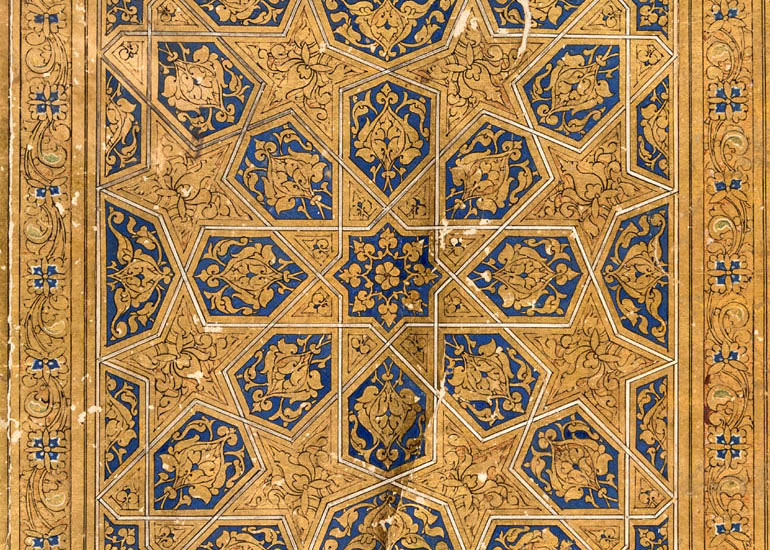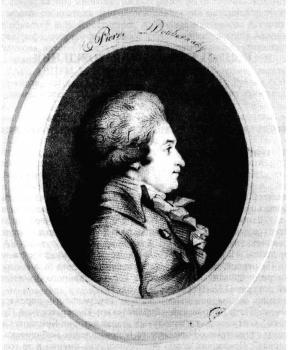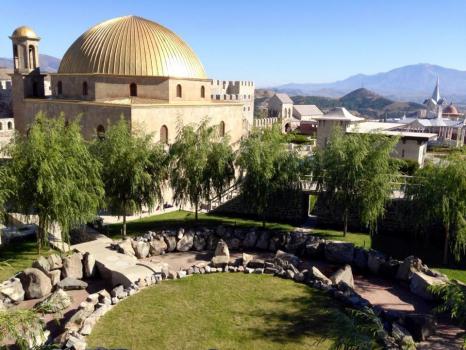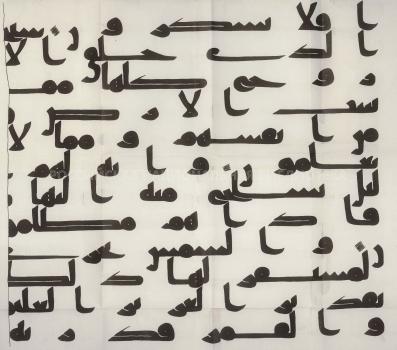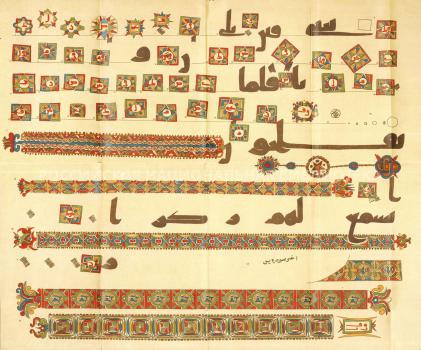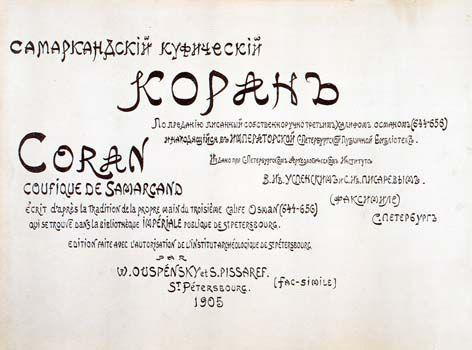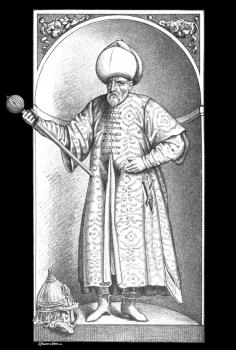Quran Manuscripts
Qurans of the Manuscripts Department: History of the Collection
The National Library of Russia has not very big but an interesting collection of 240 handwritten Qurans. The collection includes 130 fragments from early manuscripts dating from the 7th to 12th centuries. It also contains complete or almost complete volumes (totaling 50), separately bound parts of the Quran such as chapters (surahs) or juzes (one thirtieth), as well as fragments from manuscripts of different times. These are complemented by pages of calligraphy with text of some surahs, bound in muraqqa albums compiled in Iran from the 16th through 18th centuries.
The first nine Qurans came to the Library in 1805 as part of an extensive collection of the diplomat Pyotr Dubrovsky (1754–1816) who spent many years in France and visited many European countries. Some of these manuscripts had once definitely belonged to the library of the Parisian abbey of Saint-Germain-des-Prés. Among the items in the incomplete catalogue of his collection, he made special mention of the three Qurans: two hanwritten books (Дорн 6, Дорн 41) and a scroll dated 1404 (АНС 223). The Dubrovsky Collection included two more volumes, a leaf of an early Quranic manuscript, two sections from a 14 century manuscript (Дорн 10), as well as Quranic amulets, one of which is a talismanic scroll (Дорн 37) and the second is an octagonal miniature book (Дорн 35).
The most miniature talismanic Quran "of the smallest size, round-shaped, written on silk paper, with a silver amulet reliquary for placement it" (Дорн 36) was donated to the Library in 1814 by the general of the cavalry Alexander Tormasov (1752–1819).
Trophies from the Russo-Persian War of 1826–1828 also reside in the Library’s Manuscript Department. Notable among them is the Ardebil Collection that includes two albums compiled in Iran in the last 16th century (Дорн 147, Дорн 148), which contain several calligraphic pages with phrases from the Quran.
Thanks to the successful action of the Russian Army in its campaigns against Turkey, between 1829 and 1830, the Library received a large number of trophy Oriental manuscripts. The collection brought from a small city of Akhaltsikhe (now Georgia) contained two Qurans. One of them, coped in 1076/1665 - 1666, was donated by Haci Ahmed Pasha to the Ahmediye Great Mosque that was founded by him in this city and bears his name (Дорн 8). 16 Quran manuscripts came from the school at the palace guard mosque which was built by Sultan Suleiman the Magnificent in Edirne (historically known as Adrianople). One of them is a 14th century illuminated Quran that was donated in 1691 by Sultan Mehmed IV to the mosque he renovated (Дорн 12).
The manuscripts from the Puławy library of the Princes Czartoryski, received in 1833, also included a 18th century Quran (Дорн 39).
The Imperial Public Library Report for 1863 provided details of the purchase of several manuscripts that previously belonged to the Minister of Internal Affairs, Minister of Appanages Lev Perovsky (1792 – 1856). Among them is a Quran, dated 1025/1616, which was found in the city of Argun in 1839. (АНС 85).
In 1864, the Library acquired with state funding a collection of 130 fragments of ancient Kufic Qurans and a complete copy of a 14th century Quran (Марс. 132) from a heiress of the French Arabist Jan Joseph Marcel. He assembled the collection during the French expedition to Egypt, equipped by Bonapart.
The policy of expanding the borders of Russia in Central Asian region resulted in a great growth of the Public Library's collections through both purchased and trophy Islamic manuscripts which were transmitted by the first Governor–General of Russian Turkestan Konstantin von Kaufmann. In 1870 the library received a unique Quran which, according to the legend, was copied by the eminent companion of the prophet Muhammad, the Murdered Caliph Uthman (Osman) ibn Affan, and was stained with his blood. In one version of the story, the Quran was owned by the Emir Timur himself, and another says that it was brought to Samarkand from Asia Minor by a disciple of the famous preacher Khwaja Ahrar. The Quran was held for a long time at the mausoleum in the mosque and was restored between the late 18th and early 19th centuries by the Tatar mullah Gabdurakhim Utyz Imyani. Formally, the Quran belonged to the treasury, namely to the Bukhara Emir, and not to the mosque. This may be the reason why the Samarkand religious leaders (ulema), who had already become citizens of the Russian Empire, "presented" this manuscript to the head of the Zeravshan district, Major General A. Abramov, "in exchange for a monetary donation to this Muslim temple". Abramov sent the manuscript to Tashkent to Kaufmann who transferred it to the capital's Public Library, where it was housed for a little less than half a century. During this time, the Samarkand Quran was thoroughly studied by A.F. Shebunin. His research shows that the manuscript could not have been copied by the Caliph Uthman. The scientist attributes it to the beginning of the 2nd century AH (8th century AD). Shebunin published samples of handwriting and examples of ornamental decorations from the manuscript (Fig. 5). V.V. Stasov's album also contains coloured markers for chapters and verses, which the compiler dated to the 8th century (Fig. 6). In 1905, a facsimile publication of the Samarkand Koran was undertaken by the merchant Semyon Pisarev (Fig. 7). In 1906, Surah Ya-sin of a reduced size was published in the St. Petersburg electro-printing house of Ilyas Boragansky.
Following the conquest of the Khiva and Kokand Khanates, the Public Library was expanded with new collections. In 1874, a Quran manuscript dating 1001 / 1592 (АНС 1) was received as part of the collection of Muhammad Rahim Khan II of Khiva. Three years later, the library from the palace of Khudayar Khan of Kokand, which included a Quran with Persian interlinear translation, was delivered to St. Petersburg (АНС 14).
Valuable acquisition of 1883 and 1899 were the collections of the two heads of the Russian Ecclesiastical Mission in Jerusalem: Bishop Porphyrius (Uspensky), (АНС 277) and Archimandrite Antonin (Kapustin) (АНС 106), which also contained Qurans.
In 1900, Colonel Zhirkovich, who lived in Vilnius, presented 4 leaves from a luxurious copy of the Quran, one of which has a colophon with the date 1173/1759 (АНС 87). The first acquisition of the Soviet period was a Quran manuscript donated by the writer Maxim Gorky in 1919. In 1948, a calligraphic copy of the Quran, dating 945/1538–1539 was acquired. (АНС 357).
In 1974, the specialist in Arabic epigraphy and Islamic art, Professor of Leningrad University Vera Krachkovskaya (1884–1974) handed out the library of her late husband, Academician Arabist Ignatiy Krachkovsky (1883-1951), which contains seven manuscript copies of Quran.
One of them, produced in Medina in 982/1574 (Кр. 50), was bought by Krachkovskaya from the biophysicist Sergei Chakhotin (1883-1973), a "defector" who returned to the USSR in 1958. Sergei Chakhotin (1883-1973) was a son of Stepan Chakhotin (1857-1919), a dragoman in Istanbul and, from 1895 to 1915, a Russian consul in the Serbian city of Niš. On the last folio, under a pasted sheet of paper, Krachkovskaya discovered an endowment inscription indicating that this Quran was the contribution by the Grand Vizier of Sokollu Mehmed Pasha (1505-1579) to the mosque built by the famous architect Mimar Sinan in 1571–1572 at the request of Sokollu Pasha's wife Esmehan Sultan, a daughter of Sultan Selim II. The mosque is located in Azapkapi neighborhood on the European side of Istanbul.
The Krachkovsky Collection also contains a 19th century multi-volume Quran (Кр. 46) and a miniature talismanic scroll (Кр. 80) in a case made of dark gray ornamental stone. As evidenced by the initials PF carved on the lid of the case, the scroll was owned by the mining engineer, Director of factories in the Altay region, Pyotr Frolov.
In 1976, 122 Arabic, Turkish and Jewish manuscripts came to our library from the Bakhchisarai Historical and Archaeological Museum by the order of the Ministry of Culture of Ukraine. Ten Qurans, forming the Islamic part of this collection, mostly belonged to the Crimean khans and Zincirli Madrasa (Madrasa with chains), located near Bakhchisarai in the Crimea.
Over the past 25 years, the Library has acquired many Islamic manuscripts together with 6 Qurans, including a finely designed copy of Surah 6 (al-Anam), dating 957/1551. (АНС 667).
It is not always possible to determine the origin of an Quran manuscript or the date it was acquied. One such example is a copy of the Quran, produced in 1275/1858–1859 in Central Asia (АНС 282). The second is a souvenir that consists of two metal plates hinged together in the form of a book. It imitates a double-page decoration with Chapter 1 and the initial verses of Chapter 2 (ayats 1-3 ) (АНС 392).
O. Vasilieva
